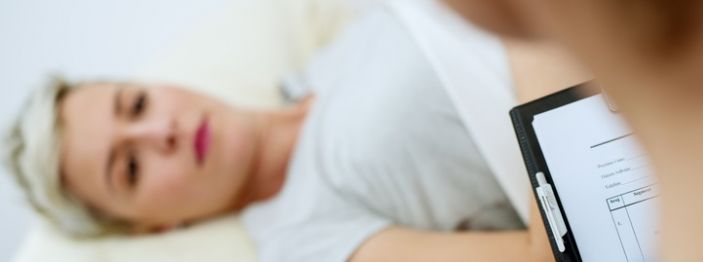Why do you need a spinal tap?
A spinal tap (lumbar puncture, or LP) is a procedure in which a doctor inserts a needle into the space between two vertebrae in your lower spine to remove about a tablespoon of cerebrospinal fluid (CSF), which bathes the tissues of the spinal cord and brain.
Spinal taps were initially part of the routine work-up for people suspected of having multiple sclerosis but became less common in recent years. However, the most recent set of guidelines on how to diagnose MS have recommended more widespread use of spinal taps (Thompson and colleagues. Lancet Neurol 2018;17:162-173), so it’s likely that they’ll be done more frequently now.
Spinal taps are generally performed for two reasons. The most common is to confirm a diagnosis of MS. MS is a clinical diagnosis based on a neurological exam and the neurological symptoms you report, such as nerve tingling, nerve pain, impaired vision, muscle weakness and so on. Supporting evidence is obtained from magnetic resonance imaging (MRI), which can detect areas of inflammation (MS lesions) in the brain and spinal cord. An MS diagnosis is made if there is evidence of two neurological events (such as two relapses, or old and new lesions on an MRI) affecting at least two areas of the brain (as demonstrated by the type of symptoms you have or by an MRI). For example, if the person has impaired vision and difficulty walking, this indicates that two different areas of the brain are affected.
These diagnostic criteria may appear clear-cut, but they can be less obvious in the real world. For example, many things (such as migraines) can cause MS-like spots to appear on an MRI. So a spinal tap can add to the evidence of whether or not a person has MS. The CSF of most people with MS contains proteins (antibodies) which, when spun in a centrifuge, form distinct bands. These so-called oligoclonal bands suggest that the person has MS; they are not definitive of MS because the bands may occur with other medical conditions. But in situations in which the symptoms sound like MS and the lesions appear to be MS-like, the presence of bands reinforces the suspicion that the problem is indeed MS. Conversely, if there are no bands in the CSF, the person may still have MS but another diagnosis is more likely.
The second reason why a spinal tap may be performed is to determine if the person has antibodies to the JC virus. The JC virus can cause a potentially fatal brain infection called PML (for progressive multifocal leukoencephalopathy). The risk is highest for people taking Tysabri, but a few PML cases have also occurred during treatment with Tecfidera or Gilenya. A spinal tap adds to the doctor’s knowledge about whether a person is at risk of developing PML. This is especially important during treatment with Tysabri. It’s also important after switching from Tysabri to another therapy because low-level PML that develops during Tysabri can flare up after another treatment is started. Once again, the results of a spinal tap are not definitive (Lin and colleagues. J Neuroimmunol 2013;261:123-128), so an MRI is often needed before starting another therapy to rule out PML.
A spinal tap is an unpleasant procedure. It’s best to avoid taking blood thinners (including Aspirin) for a few days beforehand. For the procedure, the person is asked to lie on their side with their knees tucked into their chest, or to lean forward in a chair with their arms and head resting on a table. The idea is to flex the back to allow access to the space between the vertebrae. The lower back is disinfected, the area is often anesthetized, and a thin, hollow needle is inserted. It’s best to avoid strenuous exercise for a day or two after the procedure. Some doctors may advise bed rest afterward. The most common side effects are back pain and headache. These problems are more likely in younger people. Headaches are more common in women (especially younger women) and people who suffer from headache disorders (such as migraine) (Engleborghs and colleagues. Alzheimers Dement 2017;8:111-126). There is one case report that headache got worse on an airplane, so it may be best to avoid air travel for a day or two (Porhomayon and colleagues. Case Rep Anesthesiol 2013;2013:253218). Headaches will go away on their own without treatment in most cases. If headaches persist, gabapentin (a drug used to treat nerve pain) can be a help. Caffeine is also reported to relieve the headache.
Share this article
Facebook Twitter pin it! Email
Related Posts
Back





